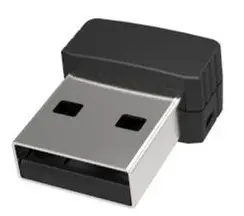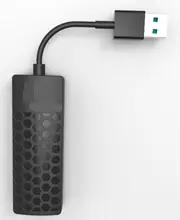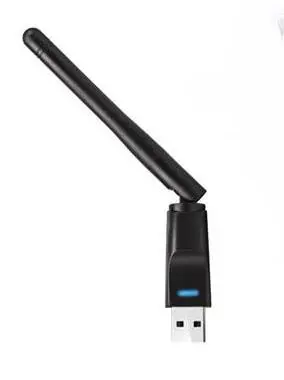
How to Test and Certify Wireless USB Dongles?
Testing Methods for Wireless USB Dongle Transmitters
Wireless USB dongle testing is divided into three categories: "Simple Dongles," "Dongles with Rotatable or Rotating Connectors," and "Dongles with External or Rotatable Antennas." Details for testing are as follows:
I. Simple Dongles
A "Simple Dongle" refers to a USB dongle transmitter typically equipped with an internal antenna.

*(Reference Product Image)*

According to KDB 447498 D02, the testing methods are as follows:
1. Testing Orientations:
- (A) Horizontal Upward
- (B) Horizontal Downward
- (C) Vertical Front
- (D) Vertical Rear
2. Testing Distance: 5 mm or less (the testing distance must be consistent across all modes).
II. Dongles with Rotatable or Rotating Connectors
These dongles can be connected to a host device in various orientations due to the rotating connector. When the antenna is built into the dongle, rotation can place the antenna in different positions.

*(Reference Product Image)*
According to KDB 447498 D02, the testing methods are as follows:
1. Testing Orientation and Distance: Same as for Simple Dongles.
2. If the antenna is located within 1 cm of the dongle's tip, the tip shoULd also be tested 5 mm away from the phantom in a vertical orientation.
3. For antennas within 2.5 cm of the USB connector, if the dongle can be positioned at an angle between 45° to 90°, testing in one or more such configurations may be requiRED. A KDB inquiry should be submitted to determine the appropriate test configurations.
III. Dongles with External or Rotatable Antennas
This category includes dongles equipped with external antennas or rotatable antennas.

According to the TCB Workshop November 2019 RF Exposure Procedures, the testing methods are as follows:
1. Straight Antenna Mode: Test in both horizontal upward and horizontal downward orientations at a 5 mm distance.
2. If the SAR values for the two orientations are similar, perform additional testing in the horizontal upward orientation, with the antenna connected at a 90-degree angle and pointing downward, away from the phantom. Testing distance remains 5 mm.
3. If the SAR values for the two orientations are dissimilar, indicating asymmetry in the dipole antenna, additional testing is required in vertical front and vertical rear orientations. Testing distance remains 5 mm.
4. If the dongle has multiple independent rotating antennas, the above methods should be applied to each antenna.
Professional sar testing Services
The China JJR Laboratory is equipped with advanced sar testing facilities to assist companies in resolving SAR testing challenges for wireless products. If you have products requiring SAR testing, please contact us for detailed pricing and timeline information.
Email:hello@jjrlab.com
Write your message here and send it to us
 What Are the Testing Items of California Propositi
What Are the Testing Items of California Propositi
 E-Cigarette EU TPD Testing
E-Cigarette EU TPD Testing
 Testing Certification for E-cigarettes Exported to
Testing Certification for E-cigarettes Exported to
 What is Amazon US CPC Certification?
What is Amazon US CPC Certification?
 UK Toy Safety Regulation Standard EN 71-13
UK Toy Safety Regulation Standard EN 71-13
 What is EU UFI Registration?
What is EU UFI Registration?
 EU UFI Registration for E-cigarette E-liquid
EU UFI Registration for E-cigarette E-liquid
 How to get the MSDS Report for Electronic Cigarett
How to get the MSDS Report for Electronic Cigarett
Leave us a message
24-hour online customer service at any time to respond, so that you worry!




